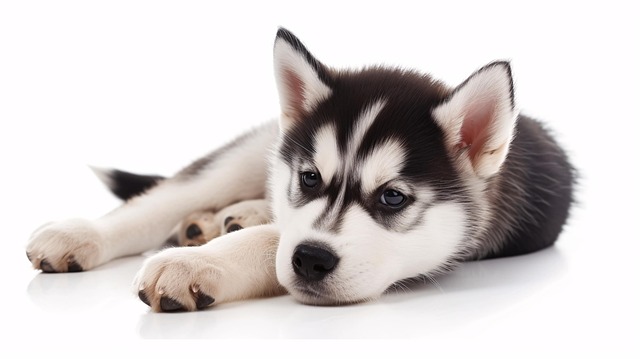
How can I tell if my dog's heatstroke is serious
Let’s be real: It’s a sticky August morning in Los Angeles, and you took your 2-year-old Golden Retriever, Max, for a walk a little later than usual
Walking into your living room to find a flurry of fur on your couch, carpets, and even your clothes can be frustrating. If you’re a new dog owner in the US and asking “What should I do if my dog sheds a lot of hair?” you’re not alone. Understanding why dogs shed and how to manage it can make a big difference in keeping your home clean and your dog comfortable.
Shedding is a natural process for dogs. It helps them get rid of old or damaged fur and make way for new growth. Different breeds shed at varying rates. For example, double - coated breeds like Huskies and German Shepherds shed heavily twice a year, a process known as “blowing their coat,” as they prepare for seasonal changes. On the other hand, some breeds, such as Poodles and Bichon Frises, shed minimally due to their hair - like coats that grow continuously instead of shedding in large amounts. Health factors can also influence shedding. Skin conditions, allergies, hormonal imbalances, or nutritional deficiencies can cause excessive shedding. Just like a human with a skin condition might have more hair loss, a dog with an underlying health issue may shed more than usual.
The first step in managing heavy shedding is regular grooming. Invest in a good quality brush suitable for your dog’s coat type. For long - haired or thick - coated dogs, a slicker brush can help remove loose fur and prevent matting. Short - haired dogs can benefit from a rubber curry comb that grabs and lifts the shedding hair. Brush your dog at least a few times a week, and during peak shedding seasons, aim for daily brushing sessions. This not only reduces the amount of fur floating around your home but also gives you a chance to check for any skin issues or parasites.

Bathing your dog with a high - quality, deshedding shampoo can also be effective. These shampoos are formulated to loosen and remove excess hair. However, don’t over - bathe your dog, as this can strip their skin and coat of natural oils, leading to dryness and potentially more shedding. Once or twice a month is usually sufficient, unless your vet recommends otherwise. Additionally, a healthy diet rich in omega - 3 and omega - 6 fatty acids can promote a healthy coat. Fish oil supplements or dog foods containing ingredients like salmon or flaxseed can help reduce shedding by keeping the skin and coat in good condition.
In the context of responsible pet ownership, remember that regular veterinary check - ups, required by law in most US states to keep your dog’s vaccinations up - to - date, can also help identify any underlying health issues causing excessive shedding. If you live in an apartment, be mindful of the mess when grooming. Use a mat or do the brushing outside if possible to avoid bothering your neighbors. When walking your dog in the community, always clean up after them as local regulations demand. And if your dog gets stressed during grooming, never use punishment. Instead, use positive reinforcement techniques like treats and praise to make the experience more enjoyable for them.
By taking these steps, you can effectively manage your dog’s heavy shedding. With a bit of effort and the right approach, you can keep your home a bit fur - free and your dog looking and feeling great.

Let’s be real: It’s a sticky August morning in Los Angeles, and you took your 2-year-old Golden Retriever, Max, for a walk a little later than usual

You're enjoying a summer afternoon at the park when you notice your dog has stopped panting and appears disoriented - their gums are bright red

Let’s paint the picture: You’re in your Denver apartment, watching your 4-year-old Boston Terrier, Ruby, plop down mid-play session with her favorite toy

Many dog owners notice their pets nails seem shorter after regular walks,but how much does this daily activity actually help?The answer depends on where you walk—concrete sidewalks or asphalt streets gently file nails as a dog's paws hit the ground

Most dog owners notice their pup scooting across the carpet at some point, but few connect it to impacted anal glands. These small sacs near a dog’s rectum secrete a scent for marking territory

Most vets agree that regular dog teeth cleaning is key to avoiding painful dental issues later. For healthy adult dogs, a professional cleaning at the vet’s office every 12 to 18 months usually works well.